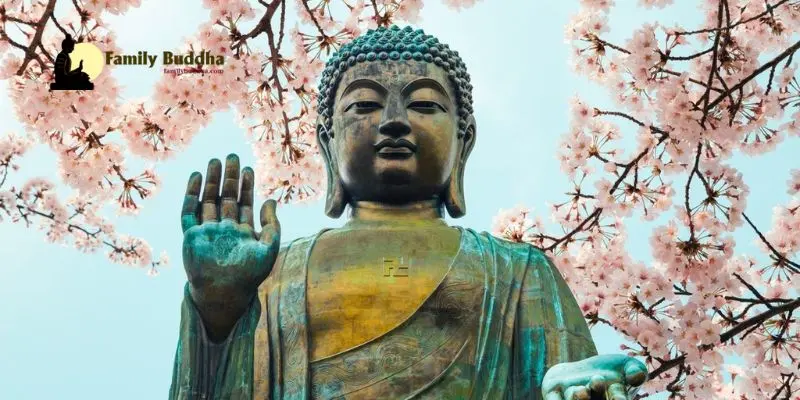The rise of Buddhism in the West has sparked a fascinating dialogue between this ancient Eastern religion and the centuries-old traditions of Catholicism. This article from Familybuddha.com delves into the complex interplay between Buddhism vs. Catholicism, exploring the historical context, philosophical underpinnings, and the ongoing debates surrounding their compatibility.
The Coming of Buddhism

The Allure of the East
Buddhism’s arrival in the West can be traced back to the 19th century when European scholars and intellectuals began to explore the rich tapestry of Eastern philosophy and spirituality. The exotic allure of Buddhist teachings, coupled with a growing disillusionment with the rationalism of the Enlightenment, paved the way for a newfound fascination with this ancient faith.
The Counterculture Movement
The 1960s counterculture movement further fueled the spread of Buddhism in the West. Young people, disillusioned with the materialistic values of modern society, found solace in the simplicity and introspective nature of Buddhist teachings. This period witnessed the establishment of numerous Buddhist centers and the influx of influential teachers from the East.
The Globalization Factor
As the world became increasingly interconnected, the exchange of ideas and cultures accelerated. Buddhism’s popularity soared as individuals sought alternative spiritual paths and embraced the principles of mindfulness, compassion, and inner peace that lie at the heart of this ancient tradition.
The Attraction of Buddhism

The Emphasis on Inner Peace
One of the primary draws of Buddhism is its emphasis on cultivating inner peace and tranquility. The practice of meditation, a cornerstone of Buddhist teachings, offers a respite from the chaos and stress of modern life, appealing to those seeking solace and self-discovery.
The Concept of Impermanence
Buddhism’s recognition of the impermanence of all things resonates with many in the West, who grapple with the fleeting nature of material possessions and the inevitability of change. This perspective provides a refreshing counterpoint to the consumerist culture prevalent in many Western societies.
The Path to Enlightenment
The Buddhist path to enlightenment, with its focus on personal growth, self-awareness, and liberation from suffering, holds a profound allure for those seeking deeper meaning and purpose in their lives. The idea of transcending the cycle of rebirth and attaining a state of ultimate peace and understanding is a compelling concept.
The Basics of Buddhism
The Four Noble Truths
- The truth of suffering
- The truth of the cause of suffering
- The truth of the end of suffering
- The truth of the path that frees us from suffering
The Eightfold Path
- Right View
- Right Intention
- Right Speech
- Right Action
- Right Livelihood
- Right Effort
- Right Mindfulness
- Right Concentration
The Concept of Non-Self (Anatta)
Buddhism rejects the notion of a permanent, unchanging self or soul. Instead, it posits that individuals are a constantly changing collection of physical and mental processes, devoid of an inherent, eternal essence.
Important Distinctions and Deep Divides between Buddhism vs. Catholicism

The Divinity of Christ
Catholicism’s foundational belief in the divinity of Jesus Christ as the Son of God and the second person of the Holy Trinity stands in stark contrast to Buddhism’s rejection of a supreme, personal God. This fundamental difference in theological perspectives creates a significant divide between the two faiths.
The Concept of Sin and Salvation
Catholicism emphasizes the concept of sin and the need for salvation through the sacrificial death and resurrection of Jesus Christ. Buddhism, on the other hand, does not recognize the idea of sin in the same way and instead focuses on the individual’s path to enlightenment and the cessation of suffering.
The Role of Rituals and Sacraments
Catholicism is rich in rituals, sacraments, and liturgical practices, while Buddhism places greater emphasis on individual spiritual practices, such as meditation and mindfulness. This divergence in approaches to religious observance can create challenges in reconciling the two faiths.
The Nature of the Soul
The Catholic doctrine of the immortal soul, which continues to exist after death, is at odds with the Buddhist concept of non-self (anatta), which denies the existence of a permanent, unchanging essence or soul.
Dialogue and Danger
The Risk of Syncretism
As Catholics and Buddhists engage in dialogue and explore potential areas of convergence, there is a risk of syncretism – the blending of distinct beliefs and practices in a way that compromises the integrity of each faith tradition. This concern has been raised by both Catholic authorities and Buddhist scholars.
The Challenge of Compatibility
While some Catholics and Buddhists have attempted to find common ground and incorporate elements of each faith into their personal practices, the fundamental differences between the two religions pose significant challenges to true compatibility. The question of whether one can truly embrace both faiths simultaneously remains a point of contention.
The Importance of Respectful Dialogue
Despite the challenges, many advocates argue for the importance of respectful dialogue and mutual understanding between Catholicism and Buddhism. By acknowledging and appreciating the unique perspectives and contributions of each tradition, adherents can foster a deeper appreciation for the diversity of spiritual paths.
Conclusion
The interplay between Buddhism and Catholicism represents a fascinating intersection of East and West, ancient wisdom and modern spirituality. While the fundamental differences between these two faiths cannot be ignored, their shared emphasis on compassion, inner peace, and personal transformation offers a potential bridge for dialogue and mutual understanding.
As the world becomes increasingly interconnected, the challenge lies in navigating this complex terrain with respect, humility, and a genuine desire to learn from one another’s traditions, recognizing that the path to truth often takes unexpected turns.










